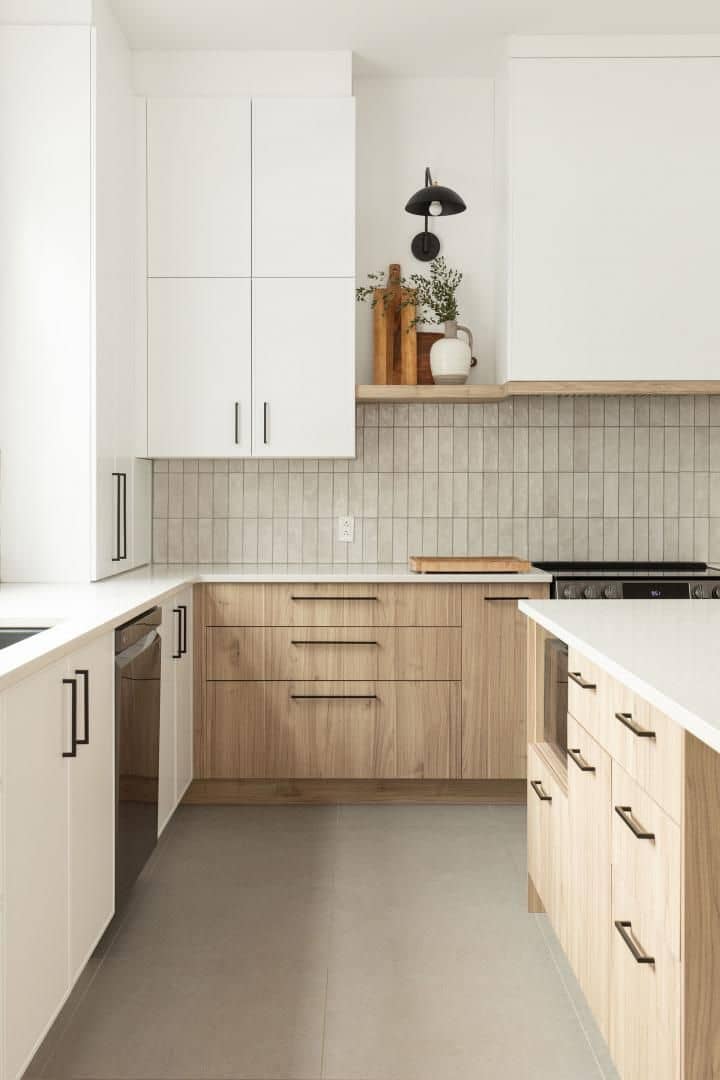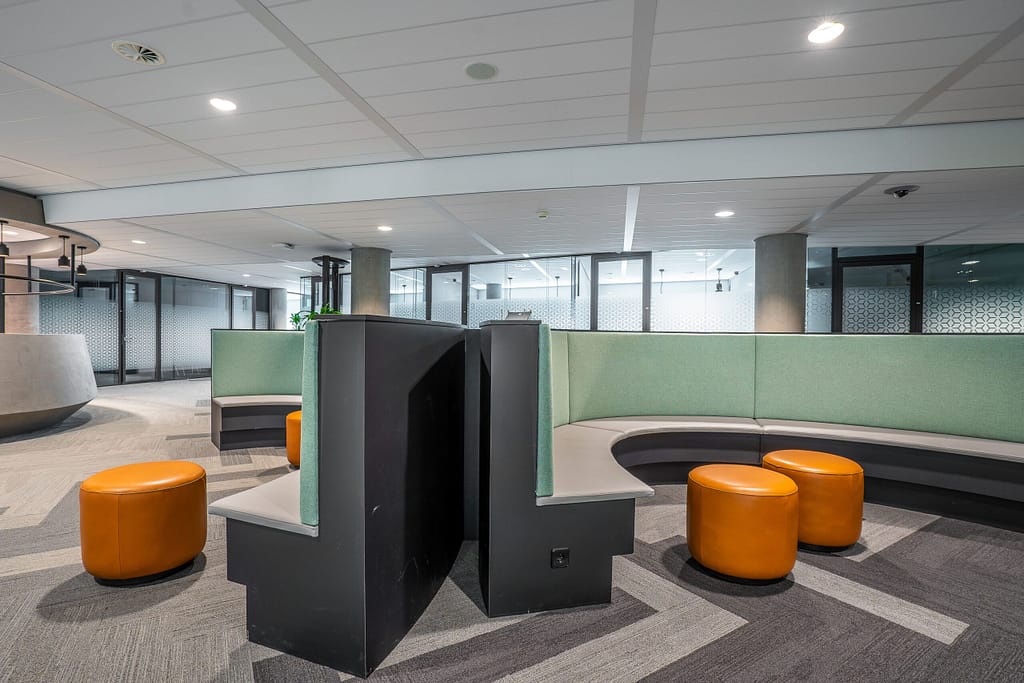
- Commercial
Future of Office Space Renovation: 2025 Trends for Hybrid Work
- By matin@quayconstruction.ca
Table of Contents
The workplace has seen a profound transformation, with hybrid work models becoming the new standard for businesses across industries. As organizations reimagine their approach to work, office space renovation has emerged as a critical strategy for creating environments that support flexibility, collaboration, and employee well-being.
The future of office spaces in 2025 is no longer about maintaining traditional workstations, but about designing intelligent, adaptable environments that seamlessly integrate technology, promote productivity, and reflect the evolving needs of a dynamic workforce. This comprehensive exploration will dive deep into the transformative trends reshaping how we conceptualize, design, and renovate office spaces for the hybrid work era.
As organizations worldwide recalibrate their workplace strategies, office space renovation has become a critical investment for attracting talent, enhancing productivity, and optimizing real estate expenditures. This comprehensive exploration will dive deep into the transformative trends reshaping how we conceptualize, design, and renovate office spaces for the hybrid work era.
The Hybrid Work Revolution: Understanding the Context
Hybrid work has emerged as more than a temporary response to global disruptions—it’s a fundamental restructuring of how we perceive workplace productivity. Companies are recognizing that flexibility isn’t just a perk but a strategic imperative for attracting and retaining top talent.
Hybrid work represents a flexible work model that combines remote work with in-office collaboration, allowing employees to split their time between working from home and working in a physical workplace. Unlike traditional fully in-office or fully remote arrangements, hybrid work provides employees with the freedom to choose their optimal work environment based on their tasks, personal preferences, and organizational needs.
Typically, a hybrid work model enables employees to:
- Work from the office for collaborative projects and team meetings
- Complete individual tasks from home or remote locations
- Alternate between home and office settings throughout the work week
- Access company resources and technologies seamlessly across different work environments
Key Drivers of Office Space Renovation in 2025
- Technological integration
- Employee wellness and comfort
- Sustainable and adaptable design principles
- Cost-effective space utilization
Technological Integration in Office Space Renovation
Modern office renovations prioritize seamless technological infrastructure. Intelligent design now means creating spaces that effortlessly bridge physical and digital work environments. From advanced video conferencing zones to IoT-enabled workstations, technology is no longer an afterthought but a core renovation consideration.
Tech-Enabled Renovation Strategies
- Modular meeting spaces with plug-and-play connectivity
- Acoustic engineering for optimal sound management
- Wireless charging stations and integrated power solutions
- Smart lighting and climate control systems
Designing for Flexibility: The New Office Renovation Paradigm
Flexibility has become the cornerstone of contemporary office space renovation. Instead of rigid, assigned workstations, designers are creating dynamic environments that can transform within minutes. Hot-desking areas, collaborative zones, and quiet focus rooms are replacing traditional cubicle landscapes.
IoT-Enabled Workstations: Smart Workplace Technology
An IoT-enabled workstation is a technologically advanced workspace that integrates Internet of Things (IoT) devices and sensors to create a smart, responsive, and efficient work environment. These workstations leverage interconnected technologies to:
- Automatically adjust desk height for ergonomic preferences
- Monitor and optimize environmental conditions like lighting and temperature
- Track workspace utilization and occupancy
- Enable seamless device connectivity
- Provide real-time data about workspace efficiency
Technology Components
- Smart sensors for:
- Occupancy detection
- Climate control
- Lighting adjustment
- Ergonomic positioning
- Connectivity Features:
- Wireless charging stations
- Automatic device recognition
- Integrated power management
- Secure network connections
Benefits
- Enhanced employee comfort
- Improved workspace productivity
- More efficient resource management
- Data-driven workplace optimization
- Personalized work environment
Hybrid Work Renovation Principles
- Multipurpose furniture with easy reconfiguration
- Acoustic pods for private conversations
- Collaborative spaces with advanced technological infrastructure
- Ergonomic design supporting both in-person and remote work styles
Sustainability and Wellness in Office Renovations
The 2025 office renovation trend extends beyond functionality to holistic employee well-being. Sustainable materials, biophilic design elements, and wellness-centric spaces are becoming standard rather than exceptional.
Wellness-Focused Renovation Elements
- Natural lighting optimization
- Indoor air quality improvements
- Integrated green spaces
- Ergonomic furniture supporting physical health
- Mental health consideration in spatial design
Cost-Effective Renovation Strategies for Hybrid Workspaces
Intelligent renovation doesn’t mean astronomical budgets. Companies are adopting strategic approaches to maximize value while minimizing expenditure. This includes leveraging existing infrastructure and making targeted, impactful modifications.
Budget-Conscious Renovation Techniques
- Phased renovation approach – phased approach allows companies to complete renovations that are required immediately, whilst adapting future upgrades to the growing needs of their workforce over time.
- Modular design investments – investing in furniture, architectural elements, and workspace solutions that can be easily reconfigured, moved, or repurposed to meet changing organizational needs.
- Energy-efficient system upgrades – budget-conscious, energy efficient upgrades such as LED lighting, zoned temperature control, and smart power management solutions, can save you money on a monthly basis.
Future-Proofing Office Spaces: A Strategic Approach
Successful office space renovation in 2025 requires forward-thinking strategies that anticipate evolving work dynamics. This means creating adaptable environments capable of transforming with minimal disruption.
Future-Proofing Strategies
- Scalable technological infrastructure
- Flexible architectural designs
- Continuous feedback and adaptation mechanisms
- Investment in reconfigurable spaces
FAQ: Office Space Renovation for Hybrid Work
Q1: How much does a typical office renovation cost? A: Costs vary widely, ranging from $50 to $250+ per square foot, depending on complexity and technological integration.
Q2: How long does an office renovation take? A: Typically, 3-6 months for comprehensive renovations, with phased approaches potentially extending the timeline.
Q3: What are the most critical considerations for hybrid workspace design? A: Flexibility, technological infrastructure, employee wellness, and adaptable spatial configurations.
Q4: How can we minimize disruption during office renovation? A: Implement phased renovation strategies, utilize temporary workspaces, and maintain clear communication with employees.
Conclusion
The future of office space renovation is dynamic, intelligent, and human-centric. By embracing technological integration, flexibility, sustainability, and employee wellness, organizations can create transformative work environments that inspire collaboration, productivity, and innovation.
As we move further into 2025, successful office renovations will be defined not by square footage, but by their ability to adapt, support, and elevate the hybrid work experience.
Related Posts

Kitchen Remodel vs Renovation: Which Is Right For You (DUPLICATE)




